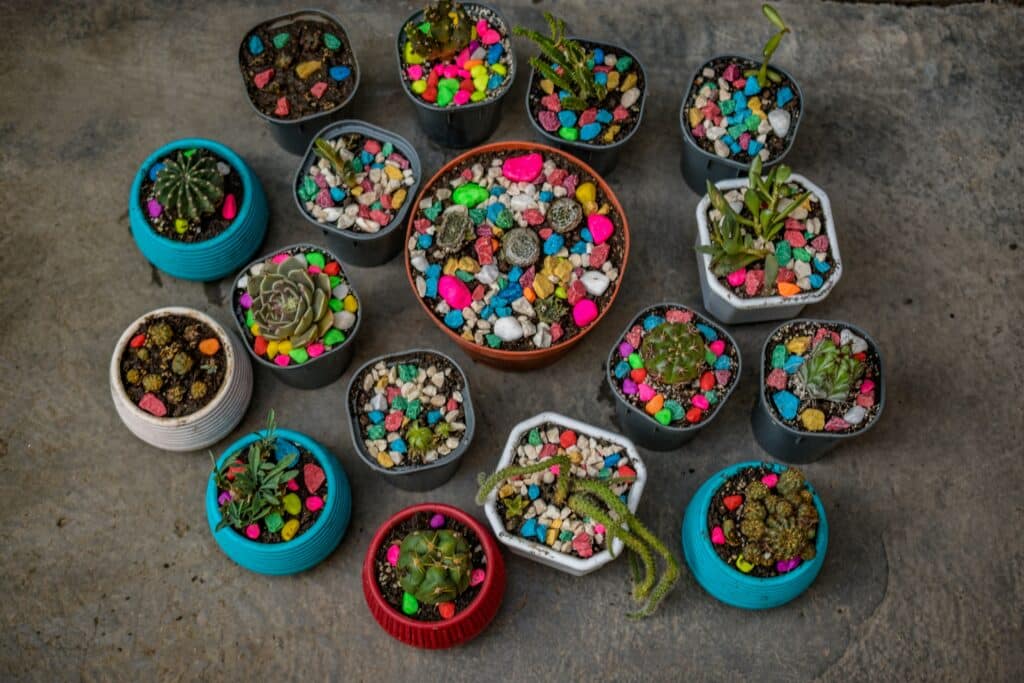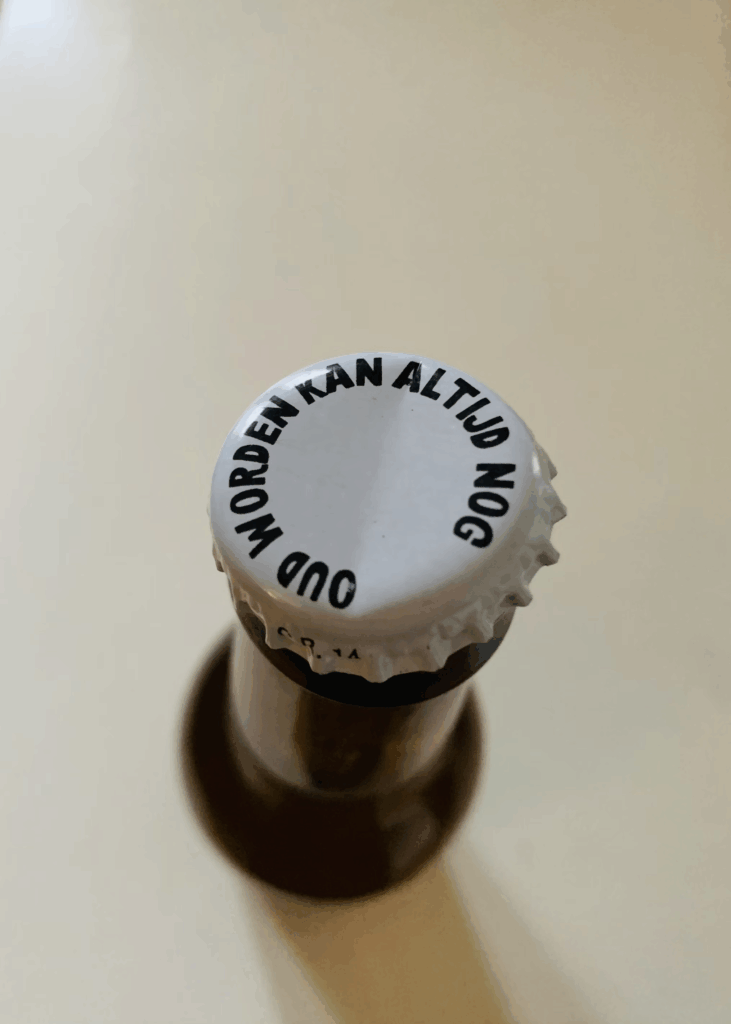Look no further! In this post, we explore the innovative concept of “Grow with Style: Transform Your Garden with Bottle Cap Garden Labels.” We will dive into the nitty-gritty of how you can make your garden not just more organized, but also more vibrant and artistic.
Gardening, a rewarding pastime, is not just about nurturing plants but also about expressing your personality through the space you create. And, while garden labels are crucial for easy identification of various plants and herbs, why not make them more stylish and eco-friendly? This is where bottle cap garden labels come in to steal the show.

Bottle cap garden labels, a perfect fusion of style and functionality, not just enhance the aesthetic appeal of your garden but also contribute to sustainability. So, are you ready to transform your garden into an eye-catching oasis and express your love for the environment simultaneously? This post has all the juicy details for you.
We will walk you through the step-by-step process of creating your bottle cap garden labels, making it easy even for beginners. Plus, we’ll share some innovative design ideas that you can play around with. From choosing the right bottle caps to the finishing touches, we’ve got it all covered for you.
Whether you are a seasoned gardener or just beginning your gardening journey, this unique approach will surely amplify the beauty of your garden. So, get ready to dive into the world of bottle cap garden labels and revolutionize your gardening experience! Let’s grow with style together.
The Art and Science Behind Bottle Cap Garden Labels
Designing a garden requires more than just choosing your favorite plants and arranging them in an aesthetically pleasing manner. It also entails identifying each plant species for proper maintenance and for easy recognition. This is where bottle cap garden labels come into play.
Bottle cap garden labels are not just functional; they are also an innovative way to upcycle materials and add a touch of personal style to your garden. The process involves using bottle caps to create unique and durable labels for each of your plants.
These labels help ensure that your garden remains well-organized, especially if you’re growing multiple varieties of herbs, vegetables, or flowers. With each plant clearly marked, it becomes much easier to care for them based on their specific watering, feeding, or pruning needs.
Additionally, using bottle caps supports eco-conscious gardening practices. Instead of throwing them away, metal caps can be transformed into charming miniature signs that bring whimsy and color to garden beds or containers. Their small size and shiny surface can also make your labels stand out, catching the sunlight and adding visual interest.
Whether you’re a seasoned gardener or a beginner, bottle cap garden labels combine practicality with creativity—turning discarded objects into tools of beauty and function in your growing space.
Material Considerations
The first step in this process is gathering your materials. This includes bottle caps, a hammer, nails, and an optional piece of wood for hammering. It’s important to choose bottle caps that are sturdy and can withstand various weather conditions. Ideally, you should use metal caps from beer or soda bottles, as they are built to last. Plastic caps can work too but may not offer the same durability, especially when exposed to prolonged sunlight, rain, or wind.
If you’re planning to use adhesive labels or paint, you might also want to have clear waterproof sealant spray on hand to protect your designs. Additionally, you’ll need stakes—wooden skewers, dowels, or metal rods—to mount your labeled caps for easy placement in your garden beds or containers.
Designing Your Bottle Cap Labels
Designing your bottle cap labels is a creative process that allows you to express your personal style while adding functional elements to your garden. You can match your designs to your garden’s theme—rustic, modern, playful, or minimalist. These tiny pieces become more than just labels; they turn into small works of art that add personality and charm to your outdoor space.

Choose Your Labeling Method
There are a few different methods you can use to label your bottle caps. One popular method is to write directly on the cap using a permanent marker. This is the easiest method, but it may not be as durable or visible as other methods, especially after exposure to moisture and UV rays.
Another option is to use a label maker to print out labels and then adhere them to the bottle caps. This method is a bit more labor-intensive but results in clearer, more legible names and adds a polished look to your garden. For a more artistic approach, consider painting plant names on the caps using acrylic paint and fine brushes. Once your design is complete, apply a layer of waterproof sealant to ensure longevity and weather resistance.
With a little time and creativity, your bottle cap garden labels can become a long-lasting and beautiful addition to your green space.
Choose Your Labeling Method
There are a few different methods you can use to label your bottle caps. One popular method is to write directly on the cap using a permanent marker. This is the easiest method, but it may not be as durable or visible as other methods.
Another option is to use a label maker to print out labels and then adhere them to the bottle caps. This method is a bit more labor-intensive, but it results in a more professional-looking and durable label.
The Process of Making Bottle Cap Garden Labels
Now that you have your materials and design ready, it’s time to start making your bottle cap garden labels.
Flatten Your Bottle Caps
The first step is to flatten your bottle caps. This can be done by placing the cap on a hard surface, such as a piece of wood, and then hammering it until it is flat. Be careful to avoid hitting your fingers during this process. For more uniform results, you may want to use a rubber mallet or place another flat object, such as a thick book wrapped in cloth, over the cap before hammering. This helps distribute the force evenly and prevents bending the caps in unwanted directions.
Label Your Bottle Caps
The next step is to label your bottle caps. If you are using a marker, simply write the name of the plant directly on the cap. Choose a permanent, weather-resistant marker to ensure that your labels withstand sun exposure and rain. Alternatively, a label maker provides a clean, professional look and allows for custom fonts and styles. Some gardeners also enjoy using decoupage techniques, adhering printed names or artistic illustrations to the caps and sealing them with a weatherproof coating for extra durability and charm.
Attach Your Bottle Caps to Stakes
Once your bottle caps are labeled, you can attach them to stakes using a strong adhesive like outdoor-grade hot glue, epoxy, or even small nails or screws for added security. Wooden stakes, bamboo skewers, or even repurposed metal rods can serve as the base. Make sure the stake height allows the label to be easily visible and not hidden by plant growth. If you’d like a more rustic look, consider using branches trimmed to size for a natural finish.
Label Your Bottle Caps
The next step is to label your bottle caps. If you are using a marker, simply write the name of the plant directly on the cap. If you are using a label maker, print out your labels and adhere them to the caps.
Attach Your Bottle Caps to Stakes
Once your bottle caps are labeled, you can attach them to stakes using a strong adhesive. You can then place these stakes in your garden next to the corresponding plants.
Benefits of Using Bottle Cap Garden Labels
Using bottle cap garden labels has many benefits. They are a sustainable and eco-friendly solution, helping you reuse materials that might otherwise end up in a landfill. These labels are weather-resistant, affordable, and easy to customize. Additionally, they add a whimsical, handmade touch to your garden, making it both organized and inviting. Whether you’re labeling herbs, vegetables, or ornamental plants, bottle cap garden labels are a creative and practical choice.
Environmental Sustainability
Firstly, this project encourages recycling and upcycling, promoting environmental sustainability. By reusing bottle caps that would otherwise be discarded, you are reducing waste and giving these items a new life.
Easy Identification
Another benefit is that these labels make it easy to identify your plants. This can be particularly helpful if you have a large garden with many different types of plants.
Personalization
Finally, bottle cap garden labels add a personal touch to your garden. They can be designed in any way you choose, allowing you to express your personal style and creativity. Whether you prefer rustic charm, bright colors, or whimsical designs, your bottle caps can reflect the theme of your garden and your unique personality. Kids can even join in and paint or draw on the caps, making the process a family-friendly activity that brings everyone closer to nature.
Additional Tips for Success
Here are a few additional tips to ensure success with your bottle cap garden labels:
Safety First: Always wear safety goggles when hammering bottle caps to prevent any potential injuries from flying metal shards.
Durability Matters: Use a permanent marker or weather-resistant labels to ensure your garden tags remain legible and attractive through rain, sun, and wind.
Adhesive Strength: If using glue to attach your bottle caps to stakes or sticks, make sure it’s a waterproof and weather-resistant adhesive, such as a high-quality epoxy or industrial glue.
Stake Selection: Choose durable and rot-resistant stakes. Bamboo skewers, wooden dowels, or even reused chopsticks work well. For added durability, consider sealing the wood with an outdoor-grade sealant.Clear Coating: After decorating your caps, apply a clear acrylic spray or varnish to protect your artwork from fading due to UV exposure and weather conditions.
Creative Variations
Don’t limit yourself to just writing the plant names. You can also add fun facts about the plants, planting dates, or even tiny drawings. Use bottle caps of different colors or styles to group similar types of plants or indicate watering needs. Consider arranging them in clusters or rows for aesthetic appeal. Incorporating these artistic details turns simple plant markers into miniature works of garden art.
Bottle cap garden labels are far more than simple plant markers. They represent a convergence of creativity, sustainability, and functionality. Not only do they help keep your garden organized and labeled, but they also make excellent use of what would otherwise be waste materials. By turning ordinary bottle caps into beautiful and weatherproof garden labels, you take a small step toward eco-conscious living while enhancing the visual charm of your gardening space. With a bit of time, imagination, and care, your garden can become not just a place of growth and nourishment but a living canvas for artistic expression. Embrace this sustainable DIY project and let your creativity flourish among the flowers.
Conclusion
In conclusion, the “Grow with Style: Transform Your Garden with Bottle Cap Garden Labels” truly brings a refreshing, fun, and eco-friendly twist to gardening. Utilizing bottle caps as garden labels not only offers a unique method of identifying your plants, but also promotes sustainable practices by repurposing waste into something useful and aesthetic. This concept indeed revolutionizes the traditional ways of gardening, providing a creative and practical solution that garden enthusiasts, regardless of their level of experience, can easily adopt.
Bottle cap garden labels prove that beauty, functionality, and sustainability can seamlessly blend in one innovative idea. They are a testament that gardening goes beyond planting and nurturing; it can also be an avenue to express creativity and contribute to environmental preservation.
So, whether you’re a seasoned gardener or a novice who’s just starting, take this chance to add a personal touch to your garden, reduce waste, and make gardening even more exciting and rewarding. Remember, every small step counts when it comes to making our planet a better place. Start making a difference with your garden today!



